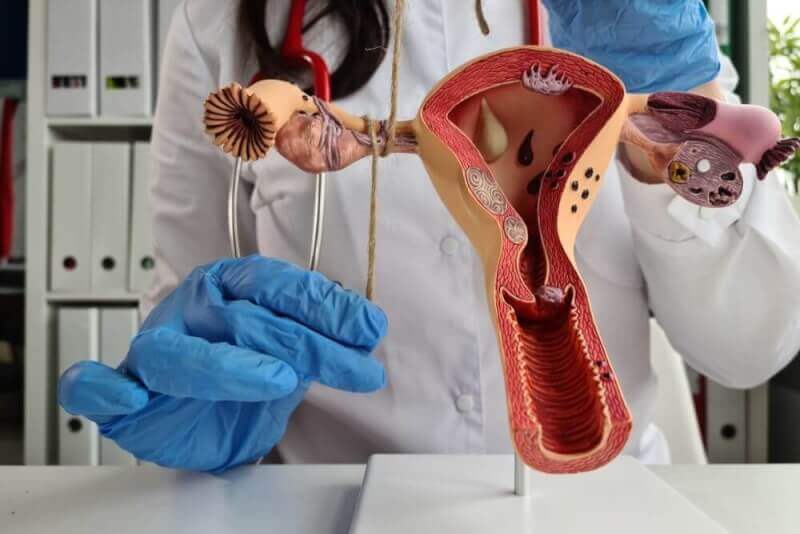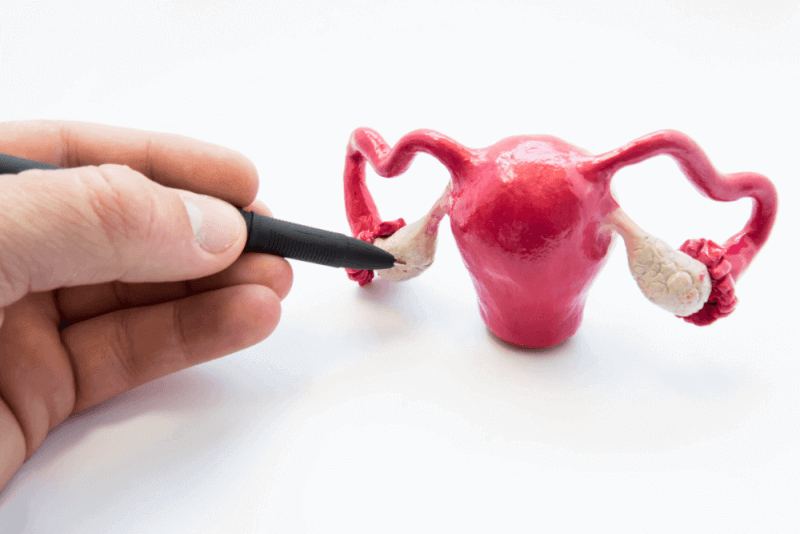What is tubal ligation?
Tubal ligation, which is one of the methods of contraception, is also called tubal ligation. It is a surgical procedure performed on women to prevent pregnancy. Thanks to the tubes connecting the ovaries and the uterus, the eggs that are released from the ovary each month reach the uterus through the fallopian tubes. If the tubes are tied, the communication between the sperm and the fertilized egg in the fallopian tubes is interrupted and pregnancy is prevented. After tubal ligation, women continue to menstruate normally. There is no problem in their sexual life. In addition, the risk of conception is completely eliminated.
Tubal ligation surgery
Tubal ligation surgery is a procedure that can be performed under both local and general anesthesia. Anesthetic drugs are injected intravenously to calm the patients. In procedures to be performed under general anesthesia, a tube can be placed in the throat to administer anesthesia through the airway.
In local or spinal anesthesia applications, anesthesia is applied from the abdomen or spine area. During this time the patient remains awake but does not feel any discomfort. The surgery usually takes 30 minutes.
Types of tubal ligation operations
Tubal ligation operations can be applied in 3 different ways. These include laparoscopy, which is a closed method, laparotomy, which is an open method, and mini laparotomy, which is in between.
Laparoscopy
The following steps are followed in the tubal ligation procedure.
- First, a small incision is made below the belly button. In some cases, an incision is made in the lower abdomen.
- Gas can then be pumped into the abdomen to inflate the abdomen. In this way, the surgeon has a wider field of vision and can perform his work more easily.
- The procedure is performed with a medical device called a laparoscope, which has a camera and light at the end.
- A laparoscope or a second medical device can be used to find and cut the fallopian tubes. If a second device is to be used, a second incision must be made.
- In tubal ligation procedures, tubes can be cut, tied, clamped, taped or closed using electric current.
- After the operation is completed, the incisions are closed with one or two stitches and a dressing is applied.
Laparotomy
Laparotomy, which is a much more extensive surgery than laparoscopy, involves a large abdominal incision. After surgery, hospitalization is required for 1 to 2 days. In laparotomy operations, an incision is made in the abdomen, ranging in size from 2 to 5 inches. The fallopian tubes are then taken out of this disc and the tubes are closed with a clamp, band, ring or cut. The tubes are then placed in place and the incision is closed.
Since the surgery is performed with an open technique, patients may take several weeks to recover. For this reason, this operation is typically performed during a caesarean section. It is otherwise not an accepted practice, especially in developed societies.
Mini laparotomy
This procedure, which involves a smaller incision than laparotomy operations, is usually performed under epidural anesthesia. After vaginal deliveries, it is recommended to apply within 24 hours after delivery. However, if epidural or spinal anesthesia was administered during labor, it is also administered during delivery.
In the mini laparotomy procedure performed after delivery, the fallopian tubes and uterus are placed just below the belly button. If a mini laparotomy is performed outside of labor, the incision is made just above the pubic bone.
How to prepare for tubal ligation surgery?
If there are medications used regularly before the operation, this should be reported to the surgeon. These include herbal supplements and even over-the-counter medicines. In particular, medications that cause the blood to water and therefore increase bleeding should be stopped. Other issues that should be reviewed before the operation are as follows.
- If the patient or close family members have an allergy to local or general anesthesia, this should be reported to the surgeon.
- Smokers should quit smoking before surgery.
- The doctor should inform you when you should stop eating and drinking the night before the operation. Patients who will receive general anesthesia are not recommended to eat or drink anything after midnight.
- On the morning of the procedure, the surgeon should be consulted about whether you can drink water while taking your regular medication.
- Comfortable clothes should be preferred on the day of surgery so that it is easy to dress after surgery.
- If there will be no hospitalization after the operation, it is necessary to arrange for people to take the patient home.
What happens after a tubal ligation?
After the operation, the patient is taken to the monitoring room to come out from under the anesthesia. As soon as patients are able to consume fluids, the intravenous line will be closed. A significant number of patients are discharged within a few hours after the operation.
Among the situations that patients may encounter at home are the following.
- After the operation, you can gradually switch to a normal diet.
- It is normal for patients to feel some pain or discomfort after surgery. The surgeon will prescribe the necessary medicines to manage this.
- Shoulder pain may occur for a few days after surgery. This is due to gas being pumped into the abdomen. Lying down for a while will relieve the pain.
- The incision site should remain dry for a few days.
- The information given by the surgeon regarding bathing and dressing should be followed.
- Stitches may need to be removed after some operations. Apart from this, control appointments should also be kept.
- Patients can return to their daily routines within a few days after surgery.
- Heavy lifting should be avoided for a few weeks after surgery. The surgeon will determine when to return to other demanding activities.
- After the surgery, sexual intercourse should be waited for 1 week.
If the following conditions occur, the surgeon should be consulted immediately.
- Increased pain
- Pain that does not go away with medication
- Fire
- Any drainage, blood, redness or swelling
- Fire
- Vomiting and nausea
- Dizziness
- Fainting spells
Who is suitable for tubal ligation?
Today, many women prefer tubal ligation. Among the reasons why the procedure is so popular are the following.
- Not wanting to have children for the rest of your life
- Experiencing side effects of other contraceptive methods
- Pregnancy is risky for the woman
- The woman or her partner has a genetic disorder that is undesirable to pass on to the child
Tubal ligation surgery is not recommended for women who are not sure whether they want to have a pregnancy in the future. Because the return from this process is difficult.
Side effects of tubal ligation
After tubal ligation, patients are expected to have mild abdominal pain and fatigue. In addition, the type of anesthesia used determines the side effects of the surgery. The most common side effects after tubal ligation surgery include the following.
- Dizziness
- Shoulder pain
- Sore throat
- Nausea
- Bloating
- Abdominal cramps
Advantages of tubal ligation operations
Among the reasons why tubal ligation operations are so preferred in modern societies are the following.
- Tubal ligation operations provide 99% contraception.
- Protects the affected person against pregnancy for life
- It is a non-hormonal contraceptive method.
- It does not cause menstruation to be affected.
- Menopause does not affect
- Reduces the risk of ovarian cancer by 40%.
Disadvantages of tubal ligation operations
Tubal ligation method causes women to be unable to conceive for the rest of their lives. This is why women need to think carefully before making decisions. The disadvantages that may be encountered if decisions are not taken in this way include the following.
- Studies have shown that 12% of women who had a tubal ligation operation regretted the procedure.
- Research shows that one should wait until the age of 30 for this procedure.
- Tubal ligation surgery is a reversible procedure. However, this procedure is extremely expensive and not always successful.
- Although tubal ligation is extremely safe, the surgical procedure carries risks.
Complications of tubal ligation
Tubal ligation operations are extremely safe. However, since it is a surgical procedure, some complications may occur. These complications include the following.
- Foul-smelling vaginal discharge
- Irregular bleeding
- Pus or blood coming from the junkie
- Pelvic or abdominal pain
- Injury to other organs during surgery
- In rare cases, the ligation of the fallopian tubes is not successful and pregnancy develops in the fallopian tubes. This condition, also called ectopic pregnancy, is extremely serious.
What is post tubal ligation syndrome?
Post tubal ligation syndrome does not occur in all patients. However, common symptoms include the following.
- PMS
- Menopause symptoms
- Abnormal bleeding
- Menstrual delay
- Cramping during menstruation
- Ligament pain
- Pain during sexual intercourse
- Pelvic pain
- Back pain
Can you get pregnant after the tubes are tied?
The chances of getting pregnant after tubal ligation are extremely low. Studies show that the probability of becoming pregnant within 10 years after surgery varies between 0.4% and 1%.
Does tubal ligation trigger menopause?
After tubal ligation operations, women continue to menstruate in their normal routine. Therefore, the operation does not cause menopause. On the other hand, women who had irregular menstrual cycles before the tubal ligation operation will continue to have irregular menstrual cycles after the operation.











